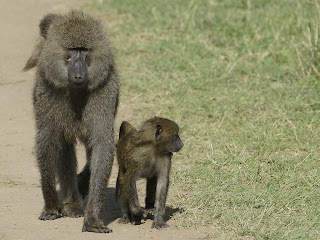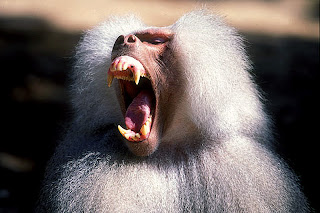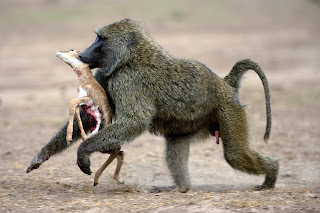General Info :
Baboons are African and Arabian Old World monkeys
belonging to the genus Papio,
part of the subfamily Cercopithecinae. The five species are some of the largest
nonhominoid members of the primate order; only the mandrill and the drill are
larger. Previously, the closely related gelada (genus Theropithecus) and the two species (mandrill and drill) of genus
Mandrillus were grouped in the
same genus, and these Old World monkeys are still often referred to as baboons
in everyday speech.
Physique :
They range in size and weight depending on species. The Guinea
baboon is 50 cm (20 in) and weighs only 14 kg (30 lb) while
the largest chacma baboon can be 120 cm (47 in) and weigh 40 kg
(90 lb). All baboons have long, dog-like muzzles, heavy, powerful jaws
with sharp canine teeth, close-set eyes, thick fur except on their muzzles,
short tails, and rough spots on their protruding buttocks, called ischial
callosities. These calluses are nerveless, hairless pads of skin that provide
for the sitting comfort of the baboon.
Diet :
Their diets are omnivorous, but mostly herbivorous, yet they
eat insects and occasionally prey on fish, shellfish, hares, birds, vervet
monkeys, and small antelopes.
Distribution :
Baboons are terrestrial (ground dwelling) and are found in
open savannah, open woodland and hills across Africa.























No comments:
Post a Comment